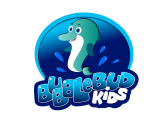Early childhood education is a critical phase in a child’s development, laying the foundation for their future learning and success. The design and implementation of an effective curriculum during these formative years play a pivotal role in shaping a child’s cognitive, social, emotional, and physical development. There are various curriculum models tailored to the unique needs of early childhood education, each with its own set of principles and approaches. We will delve into several prominent early childhood curriculum models, exploring their key principles and their impact on young learners.
I. Montessori Curriculum Model
The Montessori curriculum model, developed by Dr. Maria Montessori, emphasises child-centered learning, independence, and self-directed exploration. Key principles of the Montessori curriculum include:
-
Prepared Environment: Montessori classrooms are carefully designed to provide a nurturing and stimulating environment. Materials are organised and accessible to encourage independent exploration.
-
Self-Directed Learning: Children have the freedom to choose activities that interest them, fostering a sense of autonomy and self-motivation.
-
Mixed-Age Grouping: Montessori classrooms typically have mixed-age groups, allowing older children to mentor and younger ones to learn from their peers.
-
Hands-On Materials: Montessori materials are designed to be hands-on and self-correcting, enabling children to learn through touch and experience.
-
Individual Progress: Each child progresses at their own pace, ensuring that learning is tailored to their unique needs and abilities.
II. Reggio Emilia Approach
The Reggio Emilia approach, originating in the Reggio Emilia region of Italy, places a strong emphasis on child-initiated learning and the role of the environment as a “third teacher.” Key principles of the Reggio Emilia approach include:
-
Child-Centered Learning: Children are viewed as active constructors of their knowledge, and their interests and ideas are at the center of the curriculum.
-
Collaboration and Communication: Collaboration among children, teachers, and parents is encouraged to foster social development and a sense of community.
-
Documentation of Learning: Teachers and children document their learning experiences through art, photography, and written reflections, creating a visual history of their educational journey.
-
Environment as a Catalyst: The physical environment is considered a key element in learning, and classrooms are designed to be open, inviting, and reflective of the natural world.
-
Emergent Curriculum: Curriculum topics often emerge from children’s interests and questions, allowing for flexibility and responsiveness to their needs.
III. HighScope Curriculum Model
The HighScope curriculum model is built on the principles of active participatory learning and focuses on promoting independence, decision-making, and problem-solving skills. Key principles of the HighScope curriculum include:
-
Active Learning: Children engage in hands-on, experiential activities that promote exploration and decision-making.
-
Daily Routine: A consistent daily routine, including planning time, group activities, and choice time, helps children develop a sense of predictability and responsibility.
-
Adult-Child Interaction: Teachers interact with children by asking open-ended questions, providing guidance, and facilitating discussions, promoting language development and critical thinking.
-
Assessment through Observations: Learning progress is assessed through systematic observations, allowing teachers to tailor activities to individual needs.
-
Conflict Resolution: Children are encouraged to solve conflicts through communication and problem-solving strategies, fostering social and emotional development.
IV. Waldorf Education Curriculum
The Waldorf education curriculum, developed by Rudolf Steiner, emphasizes holistic education, artistic expression, and a balanced approach to academics. Key principles of the Waldorf education curriculum include:
-
Holistic Development: The curriculum addresses the intellectual, artistic, and practical aspects of a child’s development, with an emphasis on nurturing creativity and imagination.
-
Steady Rhythms: Waldorf schools follow a steady daily and yearly rhythm, providing a sense of security and predictability.
-
Artistic Expression: Arts and crafts, music, and movement are integrated into the curriculum to stimulate creativity and imagination.
-
Delayed Academics: Formal academics, such as reading and writing, are introduced later in the child’s development, allowing time for physical and emotional maturity.
-
Play-Based Learning: Play is seen as the primary mode of learning in the early years, with an emphasis on imaginative play and storytelling.
V. Creative Curriculum
The Creative Curriculum, developed by Diane Trister Dodge, focuses on providing a comprehensive, research-based approach to early childhood education. Key principles of the Creative Curriculum include:
-
Learning Objectives: The curriculum defines clear learning objectives for children’s development across various domains, including social-emotional, physical, cognitive, and language.
-
Developmentally Appropriate Practice: Activities and materials are selected to match the developmental level of each child, ensuring that learning experiences are appropriate and engaging.
-
Teacher-Facilitated Learning: Teachers play an active role in guiding children’s learning, promoting problem-solving, and critical thinking skills.
-
Assessment and Individualisation: Ongoing assessment helps teachers tailor instruction to individual needs and track children’s progress.
-
Parent Involvement: Parents are encouraged to be active participants in their child’s education, with regular communication and opportunities for involvement.
Early childhood curriculum models are diverse and reflect a wide range of educational philosophies and approaches. Each model carries its own set of principles, which guide the design and implementation of educational experiences for young learners. Whether it’s the child-centered philosophy of Montessori, the community-focused approach of Reggio Emilia, the active participatory learning of HighScope, the holistic development of Waldorf, or the research-based framework of the Creative Curriculum, educators and parents have a wealth of options to choose from when it comes to nurturing the potential of our youngest learners. The key is to align curriculum choices with the unique needs and interests of each child, recognising that early childhood education lays the groundwork for a lifetime of learning and growth.
About BubbleBud Kids
BubbleBud Kids stands out as an educational platform that masterfully integrates the strengths of various early childhood curriculum approaches into its fun and engaging play-based activities and games. Drawing inspiration from models like Montessori's child-centered learning, Reggio Emilia's emphasis on child-initiated exploration, HighScope's active participatory approach, and the holistic development principles of Waldorf education, BubbleBud Kids has crafted a curriculum that caters to the diverse needs of young learners.
Through its thoughtfully designed activities, BubbleBud Kids encourages children to explore, experiment, and express themselves, fostering independence, creativity, and critical thinking. The platform's mixed-age groupings, akin to the Montessori model, enable peer learning and mentorship, enhancing social development.
Furthermore, BubbleBud Kids believes in the power of the environment, akin to the Reggio Emilia approach, and carefully curates an immersive digital space that inspires curiosity and learning.
HighScope's emphasis on active learning is seamlessly woven into BubbleBud Kids' interactive games, ensuring that children remain actively engaged in their educational journey. The curriculum also embraces the holistic approach of Waldorf education, recognizing the importance of play-based learning and nurturing well-rounded individuals.
With a track record of positively impacting over 100,000 students, BubbleBud Kids has proven itself as a reliable and effective resource, offering a harmonious blend of educational philosophies to empower the next generation of thinkers and learners.



